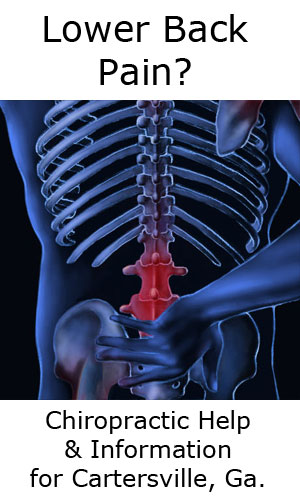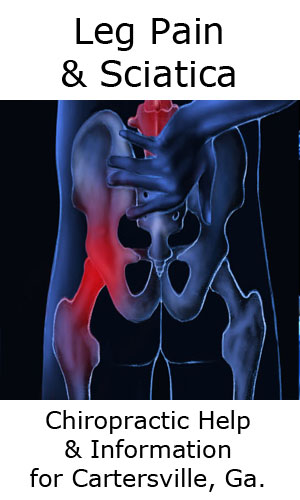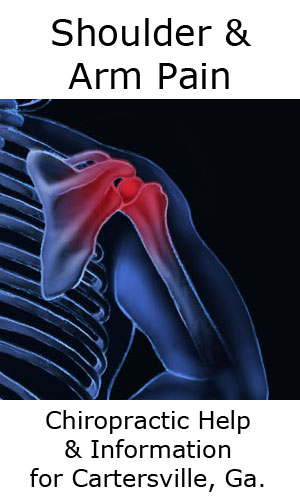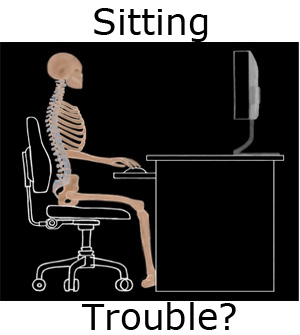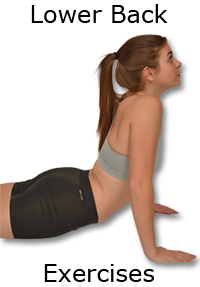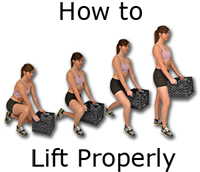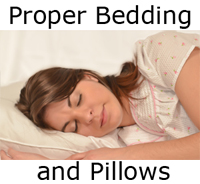Mattresses & Pillows
Two common questions I am asked, almost daily are:
WHICH BED DO YOU RECOMMMEND?
WHAT TYPE OF PILLOW DO I NEED?
Mattresses
A MATRESS IS A MAJOR PURCHASE THAT WILL BE WITH YOU FOR A LONG TIME. HERE ARE SOME TIPS ON BALANCING YOUR NEED FOR COMFORT AND SUPPORT WHILE STAYING IN YOUR BUDGET.
1. Research (but don't buy) online: Before you go into a bedding store, research bedding possibilities online to get an idea of price ranges and materials. You may find a good deal online and be tempted to buy, however a bed is something you don't want to purchase without first trying it out. Buyer beware, what looks comfortable may be incompatible with your body. TRY BEFORE YOU BUY! If you buy something online and find that you are dissatisfied with your purchase, you're going to have problems resolving it, even if it is just a matter of shipping it back ....the shipping is on you and can be quite expensive. Make your purchase at a local brick-and-mortar store, not a virtual online store.
2. Understand the three major types of mattresses: Here is a quick overview ....
- Inner Spring: Traditional beds, better known as inner-spring mattresses, come in firm, plush and pillow-top. The three are all available at various price points. Coil count and the gauge of the steel in the coils is what determines firmness and quality. Generally speaking, mattresses with coils counts below these suggestions are generally of poor quality. Coil counts vary depending on the size of the bed:
Full Size Mattress - At least 300 coils
Queen Size Mattress - At least 400 coils
King Size Mattress - At least 480 coils
- The gauge of the steel ranges from 19 (light gauge) to 12.5 (heavy gauge). Look for a mattress with a coil gauge below 14.5, a cheaper coil mattress might work for someone in college who plans to have the mattress for just a few years and then upgrade.
- Foam: Foam mattresses contour to the body without creating pressure points. If you have a tender area in your back that is sensitive to pressure, this type of mattress might benefit you. They are a lot warmer than an inner-spring mattress because you don't have the same air circulation as you would with springs. If you are hot natured and perspire a lot, this is probably not the mattress for you. Some people like the way the foam reaches around and holds you in place, however some people don't like this aspect of a foam mattress because it leaves a temporary impression of your body that lingers as you change from one position to the next. The foam is temperature sensitive and if you like a cold bedroom you are going to have a stiffer mattress. There are different densities of foam, from very soft low density, to very hard high density. Make sure you are pleased with the density if this is the type of mattress that fits your needs. One other disadvantage is an odd chemical smell when brand new. This typically dissipates after being aired out for 24 hours or within a few days to weeks, however if you are chemically sensitive the smell might linger and become bothersome.
- Air Mattress: Air mattresses allow you to personally adjust the firmness by decreasing or increasing the amount of air using a convenient remote control. One major advantage to this type of mattress for couples is the ability to have your own custom sleep surface while your partner has their own custom sleep surface. So if you like firm and they like soft ....both of you can get your way. Air mattresses tend to be more expensive but do have a longer life span because there are no springs to wear out. Many manufacturers also offer replacement air bladders should one wear out. Other advantages include being light weight for moving or transport and to tuck in sheets and blankets. There is also limited "motion transfer" so if you have a heavy sleep partner you won't feel them moving around at night. One other potential problem is the middle "trench" where the two separate air bladders come together which can be uncomfortable to lie on.
3. Consider you and your partner's needs: Factors like height, body weight, and firmness preferences should play a major role in your choice of mattress. If you are big and heavy and your partner is considerably smaller, you might need stronger inner springs to keep your hips from sagging into the bed and to prevent the springs from wearing out prematurely. However this may be too much bed for your smaller partner. You might opt for the adjustable air mattress or get two separate mattresses and connect them .....beware some don't like the space in the middle. If you are both large and heavy, there are some mattress companies that offer mattresses specially designed for heavier consumers.
4. Test mattress for comfort: Spend at least 15 minutes lying on each bed to see how it feels against your body. You are going to be spending many hours a night for the foreseeable future on your new mattress, so take your time and try multiple sleeping positions and make sure you really like what you are about to purchase. Remember that your old mattress is likely old and worn out, so everything in the store is likely to feel like an improvement so take the time to really find the right fit.
5. Ask about delivery costs and warranties: Before your final decision, ask:
- Is delivery free?
- How much will it cost to pick up and dispose of your old mattress?
- What kind of comfort guarantee do they offer?
- If I hate it, can I exchange it?
- If it wears out prematurely will you replace it?
6. Make your mattress last: Staining your mattress may void the warranty so start out with a good water proof mattress cover. Rotate and/or flip your mattress at least twice a year or more frequently if there is a significant weight difference between partners. Don't use your bed a seat for watching TV, it will wear out the corners or edge's. Don't let your children jump on your bed like it is a trampoline, it can damage the springs or the topper.
A mattress is a major purchase that should take considerable time and thought before coming to a final decision. Don't hesitate going back numerous times to try out your prospective mattress again and again. Don't be pressured into buying a mattress by a slippery salesman who just wants to make a sale. One line that I use when being pressured into a sale is "I don't make any major purchases without thinking about it for 24 hours". This should at least get you out of the store so you can think about it and discuss it with your significant other before making the "plunge."
Pillows
A proper pillow is essential for comfort and support of your head and neck. Often times the pillow is the cause of recurring neck pain and headaches. Let's go over some concepts involved in choosing the right pillow for you.
1. Pillow Size: If you are a side sleeper, the height of the pillow should match the distance between the side of your head and the side of your shoulder so that when you lay down, your neck and head remain straight not flopped down or propped up. This height pillow should properly accommodate your head and neck for back sleeping as well. The picture below is a good example of what I am suggesting. The nose is aligned with the center of the body leaving the head and neck properly aligned.
The picture below on the left shows a pillow that is too thin or too low for side sleeping. The head is flopped down putting the neck in a "downward bind."
The center picture shows a pillow that is too high for side sleeping. This pillow has the women's neck propped up, putting the neck in an "upward bind".
Both incorrect positions will result in muscle strain and spinal misalignment resulting in pain.
The picture to the right shows a level head and neck position, which is correct for side sleeping.
2. Pillow Density: Pillows should be soft, having the ability to conform to the curve's of the neck while allowing the head to comfortably settle in. We recommend two substances:
- Feather - A good feather pillow made form goose down or a feather/down combination makes an excellent pillow that conforms to the curve's of your neck whether you are a back or a side sleeper. The problem that can arise with feather is "flattening." The pillow can compress and become too flat allowing the head to flop down, putting the neck in a "downward" bind. A simple solution to this is to fold up 1-2 plush bath towels into the shape of the pillow and put them under the pillow as a soft foundation. As the pillow flattens out, the towel foundation will continue to keep your head and neck properly aligned.
- Memory Foam - Soft memory foam also makes an excellent pillow that conforms to the curve's of your neck which will work nicely for either back or side sleeping. The problem of "flattening" can also arise with soft memory foam pillows. The weight of your head will eventually compress the foam allowing the head to flop down, putting the neck in a "downward" bind. A simple solution to this is to fold up 1-2 plush bath towels into the shape of the pillow and put them under the pillow as a soft foundation. As the pillow flattens out, the towel foundation will continue to keep your head and neck properly aligned. When choosing a memory foam pillow, squeeze it to make sure it is very soft. The harder memory foam pillows are simply too hard and don't properly form to the curve's of your neck.
3. Pillow Types or Design - There are basically two pillow types:
- Standard (below left) - We recommend the standard or basic rectangle shaped pillow. The size may vary, matching the size of your mattress, however the basic rectangle, non-contoured pillow provides the best support for either back or side sleeping.
- Contour (below right)- We don't recommend contour pillows because they are basically designed for "back sleeping" and most of us, once asleep, just don't stay on our back. With a contour pillow, when you turn on your side it can put the neck in a bind and become more of a hindrance than a help. If you know that you are a steady back sleeper, this type of design may work for you, however, if you often shift from the back to the side or from side to side, this design is not likely a good choice.
THE BIG NO, NO
The big no, no is stomach sleeping. If you are a habitual stomach sleeper, this is a habit that will have to be broken. When on the stomach, the head is turned completely to one side, rotating the neck to its furthest limits like wringing out a wet towel. Combine this with the fact that the weight of your body is pushing the head and neck down into the pillow and you have a recipe for neck disaster. If you have trouble breaking the habit, have a "hard marble" sewn into the front of your pajamas ...it will serve as a reminder to get off your stomach while you are sleeping.
If you or a loved one are experiencing Lower Back Pain due to a bad mattress or any other reason, contact our office to schedule a no charge, no obligation consultation with the doctor or email Dr. Garber a question concerning your case for a quick response.
We are here to help!
Garber Chiropractic Care Center
In Cartersville Ga.
(770) 386-7707
Chiropractic Care and Pain Relief for Cartersville, Acworth, Taylorsville, Kingston, White, Emerson, and Euharlee Georgia





